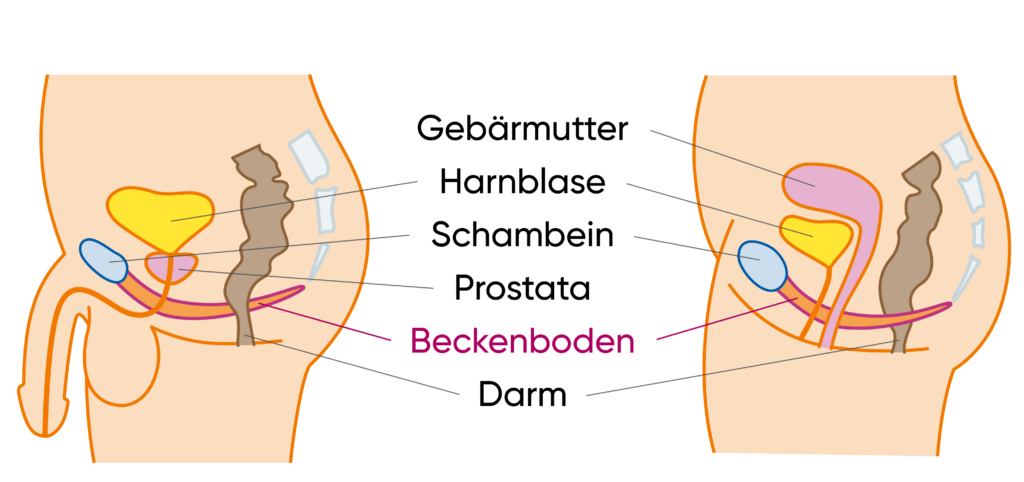The pelvic floor is a muscular plate that closes off the abdominal cavity and pelvic organs from below and curves upward at its edges. It extends like a taut cloth from the pubic bone to the back of the sacrum and coccyx, laterally the muscle group attaches to both ischial tuberosities.
What is the role of the pelvic floor?
- The pelvic floor holds the uterus, bladder and other abdominal organs in place.
- It supports the sphincter muscles of the urethra and anus
- and withstands the high pressure generated, among other things, by coughing and laughing, pressing during defecation, and physical exertion, such as lifting heavy objects.
It is therefore very important to keep these muscles strong.

When the pelvic floor goes on strike
In women, a weakened pelvic floor can lead to lowering of the uterus, bladder or part of the bowel. In men, potency disorders can manifest themselves either in premature ejaculation or in a weak or too short-lasting erection.
Symptoms for pelvic floor problems
The following signs indicate a weakened pelvic floor:
- Urinary incontinence, loss of urine when coughing, sneezing or playing sports
- Pain during urination and in the pelvic area
- Feeling of incomplete emptying of the bladder or bowel.
- Testicular, groin or pelvic pain
- Difficulties with bowel control, bowel incontinence
- Pain during sex or orgasm
Train the pelvic floor with targeted exercises
Knowing the pelvic floor and exercising it in a targeted manner is the best preventive measure. With the targeted strengthening of the pelvic floor, incontinence in particular can be well prevented in many cases.
The following factors can lead to the impairment of the pelvic floor function
- Age: wrinkles appear during menopause or between 40 and 50 years of age – the tissue slackens.
- Constipation: in men, this is one of the main factors for pelvic floor deterioration. Repeated squeezing puts stress on the pelvic floor.
- Severe overweight
- Pregnancy and birth
- Years of heavy lifting through regular lifting of heavy loads or weight-bearing sports such as weightlifting, jumping, skipping or judo can weaken the muscles and connective tissue of the pelvic floor.
- Smoking, diseases such as diabetes, chronic cough or simply genetic predisposition put additional strain on the pelvic floor.
A weak pelvic floor is a particular issue for women. But in rare cases, men can also be affected.
Possible forms of disease of the pelvic floor
Disorders at the pelvic floor structure can occur in connection with or trigger the following clinical pictures:




